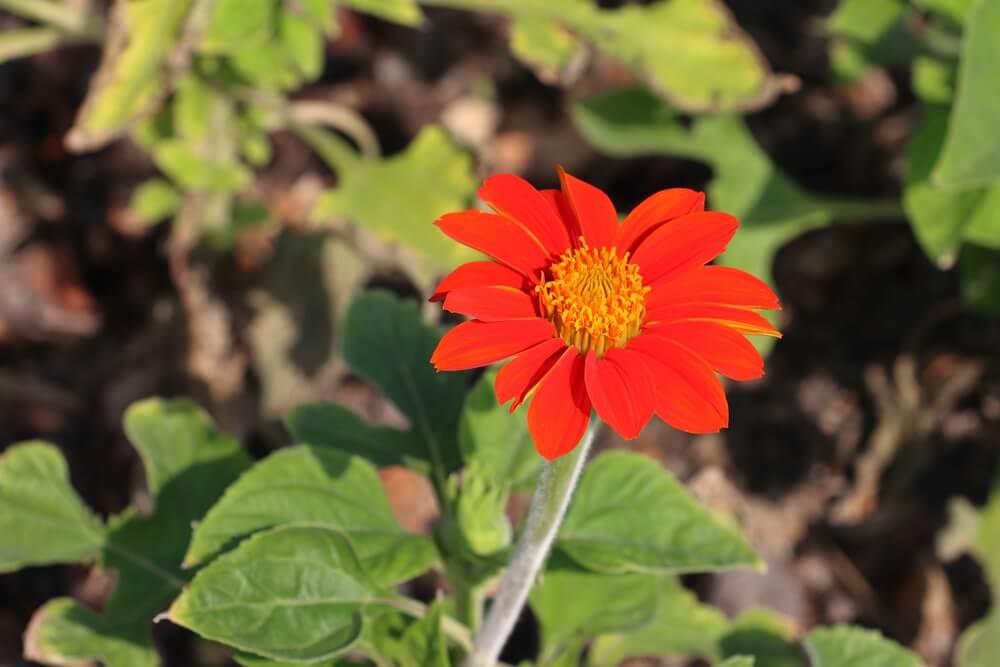21 Gorgeous Garden Flowers That Grow Wicked Fast And Fill Empty Spots Quickly!
Welcome! This article contains affiliate links, meaning I get a commission if you decide to make a purchase through my links, at no extra cost to you.
Tired of waiting an entire season to see your garden come to life? Then consider planting some of these gorgeous flowers that grow surprisingly fast! We’ve got the ultimate lineup of fast-growing flowers to transform your space from drab to fab in record time. These speed-demon blooms deliver maximum impact with minimal patience required. (Many of them also attract tons of beneficial pollinators.)

Sound intriguing?
Then let’s brainstorm these epic, fast-growing flowers!
21 Gorgeous Flowers That Grow Surprisingly Fast
These 21 powerhouse blooms establish quickly, attract beneficial pollinators, and turn neglected spaces into vibrant showcases.
1. Pot Marigold (Calendula officinalis)
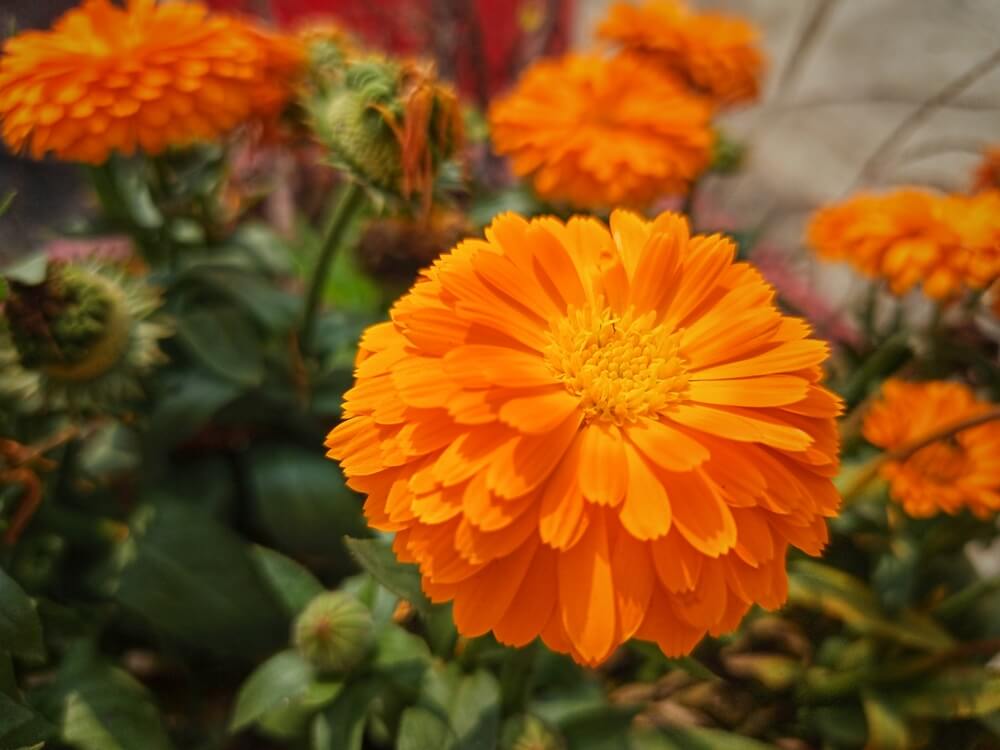
These cheerful orange and yellow beauties are like colorful racing horses. Pot marigolds germinate in just 7 to 10 days and bloom within 6 to 8 weeks. They’re perfect for impatient gardeners. They also serve more than one use for homesteaders. They’re gorgeous in the garden and edible in the kitchen. The petals add color to salads and have mild anti-inflammatory properties.
- USDA Growth Zone: 2 through 11.
- Type: Cool-season annual that tolerates light frost.
- Time Until Maturity: Blooms in 42 to 56 days from seed.
- Bloom Season: Spring through fall, often surviving light frosts.
Pot marigolds are incredibly forgiving! They tolerate poor soil and even light frosts. However, it can struggle in extremely hot conditions.
2. Cosmos (Cosmos bipinnatus)
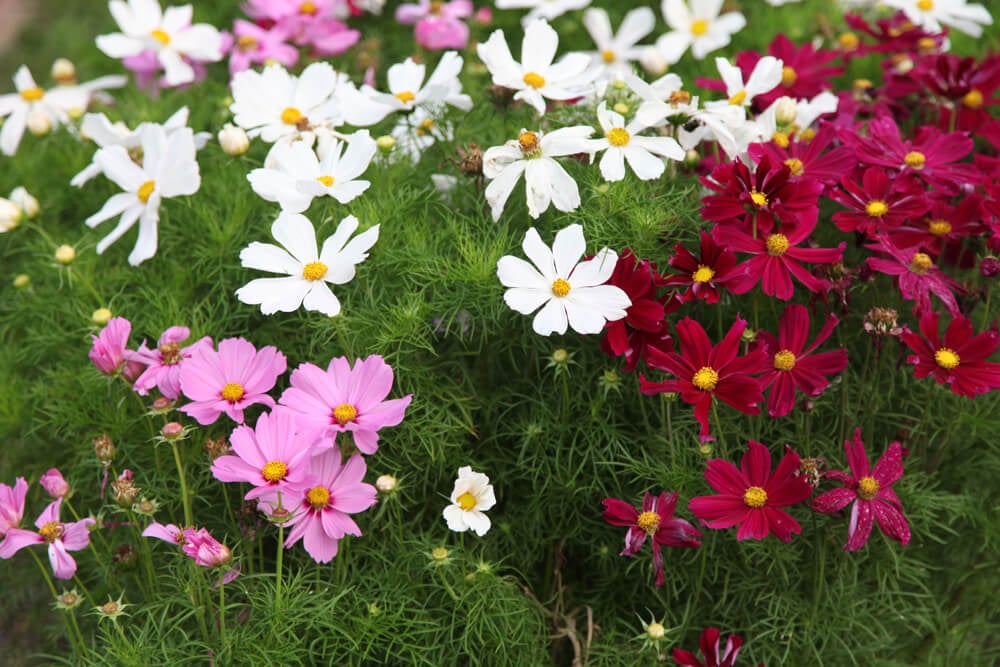
If you’ve got terrible soil, cosmos might be your new best friend. These delicate-looking flowers with feathery foliage prefer poor, sandy conditions. Rich soil tends to make them produce more leaves than blooms. They’ll shoot up to 4 to 6 feet tall in a matter of weeks, creating an instant backdrop for shorter plants.
- USDA Growth Zone: 2 through 11.
- Type: Annual that thrives in poor soil conditions.
- Time Until Maturity: Blooms in 60 to 90 days from seed.
- Bloom Season: Summer through fall until first frost.
Cosmos flowers can become floppy in windy areas. Consider staking taller varieties or choosing dwarf cultivars for exposed sites.
3. Mexican Sunflower (Tithonia rotundiflora)
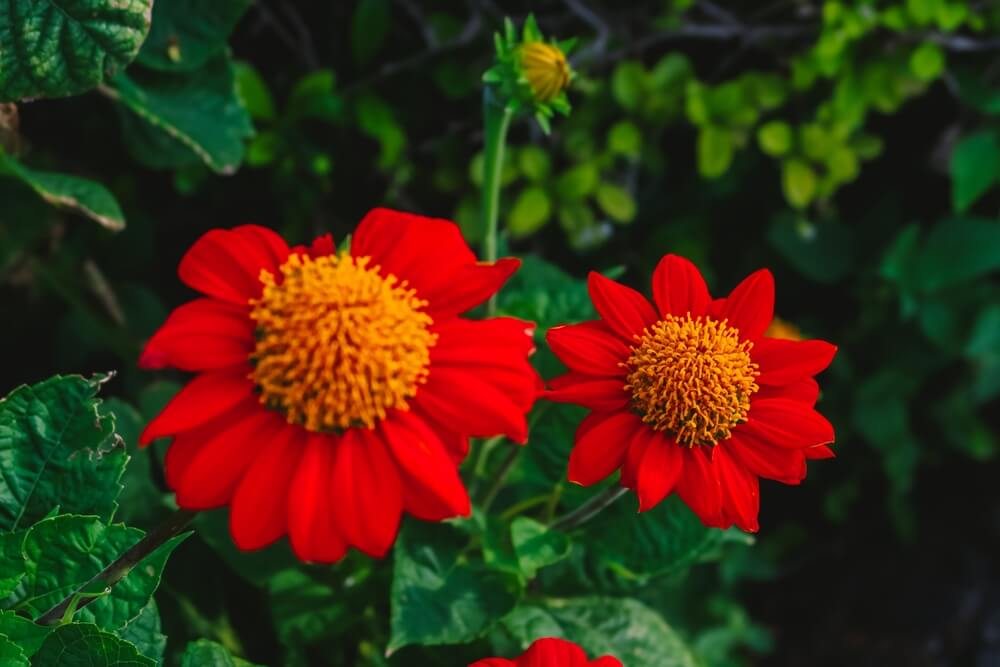
Mexican sunflowers are a vibrant powerhouse flower that produces gorgeous, 3-inch, reddish-orange blooms. It’s famous for its exceptional heat and drought resistance. They also grow incredibly fast, sometimes reaching 6 feet in a single season. And monarch butterflies also love them!
- USDA Growth Zone: 4 through 11.
- Type: Heat-loving annual, dies at first frost.
- Time Until Maturity: Blooms in 70 to 90 days from seed.
- Bloom Season: Mid-summer through fall until first frost.
The main challenge with Mexican sunflowers is their size. These plants require ample space and can overwhelm smaller garden areas if not properly planned and managed.
Read More – 26 Gorgeous Garden Themes For Your Backyard – From Fancy To Whimsical!
4. Snapdragon (Antirrhinum majus)
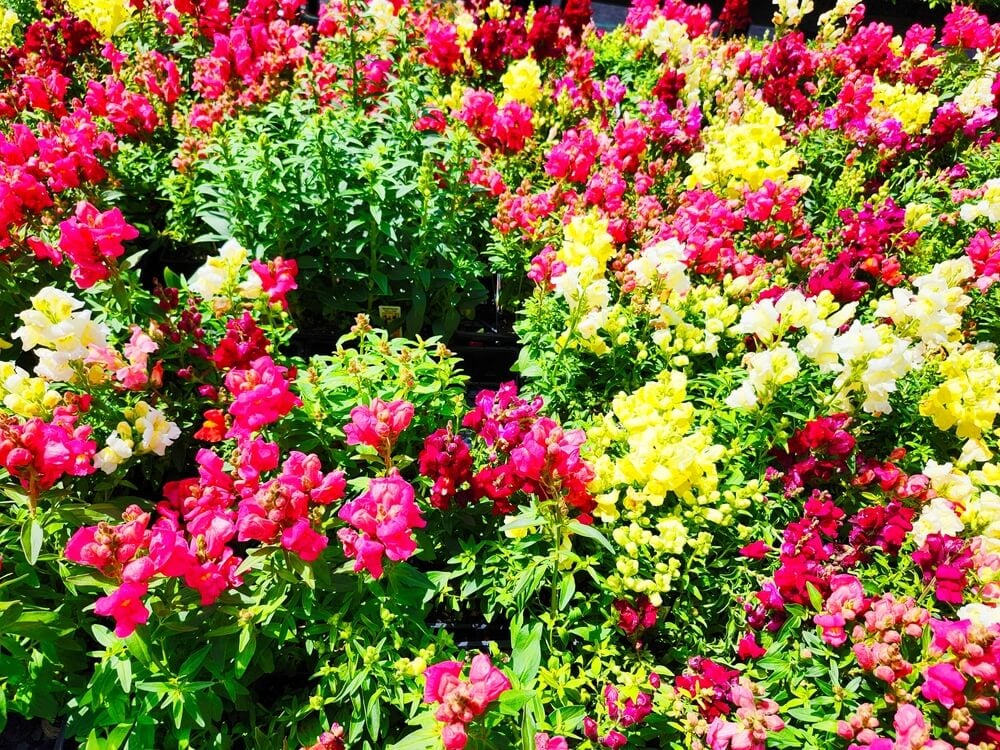
Snapdragons offer something most fast-growing flowers don’t. Cool-weather performance! They’ll bloom in spring when many annuals are just getting started, and they often survive light frosts to give you a second show in fall. They’re available in dwarf to giant sizes and are perfect for quickly filling vertical spaces.
- USDA Growth Zone: 4 through 11.
- Type: Cool-season annual, may overwinter in zones 9 to 11.
- Time Until Maturity: Blooms in 70 to 84 days from seed.
- Bloom Season: Spring through early summer, often resuming in fall.
Snapdragons prefer cooler weather and may stop blooming in intense summer heat, though they often resume flowering when temperatures drop.
5. California Poppy (Eschscholzia Californica)
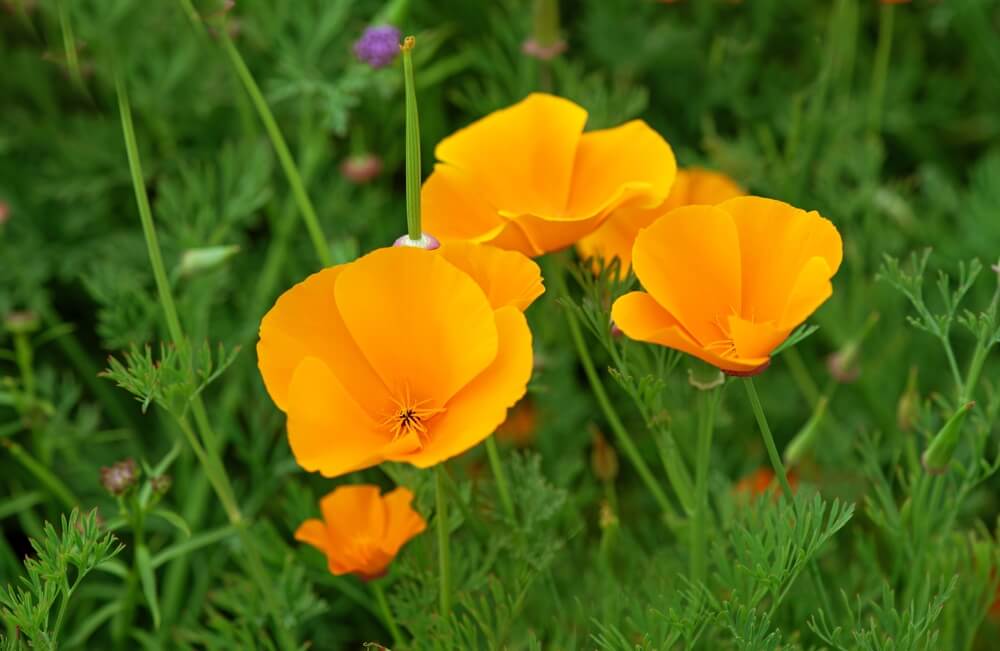
Few flowers are as dramatically rewarding as California poppies. These beauties produce large, silky blooms in vibrant colors and self-seed readily, providing future generations without the need for replanting. They prefer cool, well-drained conditions and react well to direct seeding in the fall or early spring.
- USDA Growth Zone: 5 through 10.
- Type: Cool-season annual.
- Time Until Maturity: Blooms in 60 to 90 days from seed.
- Bloom Season: Late spring through early summer.
The challenge with California poppies is their taproot. These flowers don’t transplant well, so you need to sow poppy seeds where you want them.
6. Horsemint (Monarda punctata)
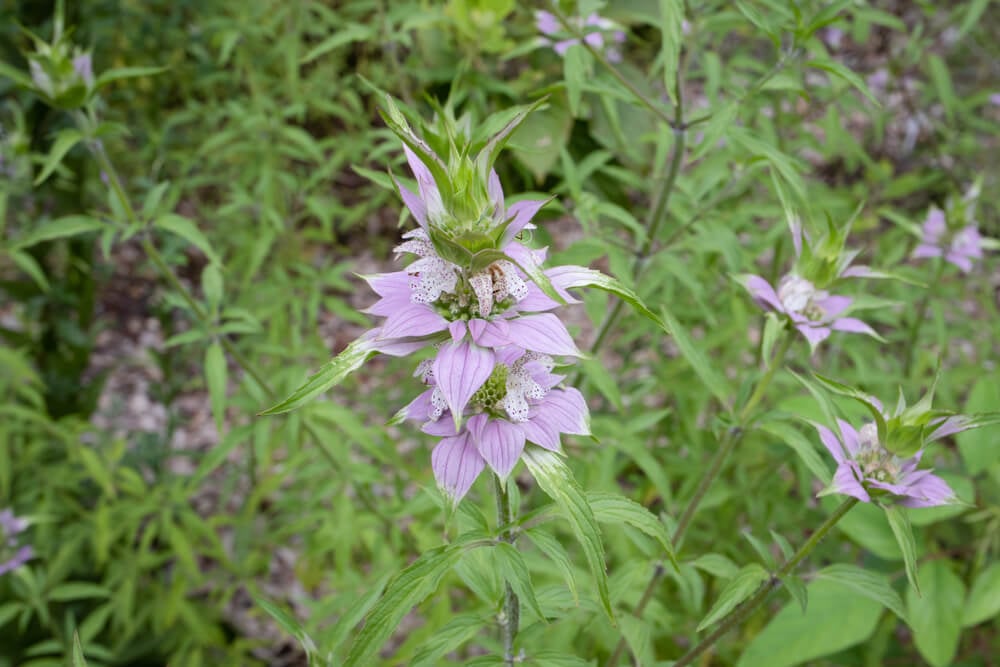
This native perennial is a pollinator magnet with unique pink-lavender bracts that last for months. Unlike annual flowers, horsemint returns year after year, spreading naturally to fill in areas. It’s incredibly drought-tolerant once established and thrives in poor soils that other plants reject.
- USDA Growth Zone: 5 through 10.
- Type: Native perennial, drought-tolerant once established.
- Time Until Maturity: Blooms in first year, 90 to 120 days from seed.
- Bloom Season: Mid-summer through fall.
Watch for horsemint’s spreading habit! While it is excellent for naturalizing large areas, these plants can be aggressive in formal garden settings and may require containment to prevent overgrowth.
Read More – 15 Gorgeous Reblooming Perennial Plants That Flower Multiple Times A Year!
7. Indigo Spires Sage (Salvia ‘Indigo Spires’)
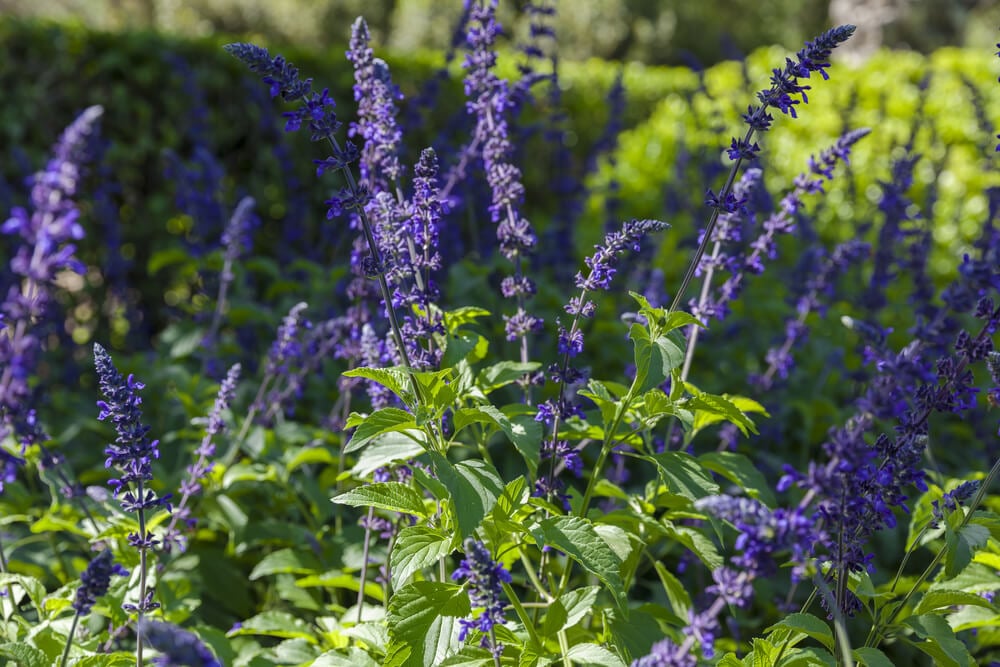
This hybrid sage is a butterfly highway in your garden. It produces tall spikes of deep blue-purple flowers continuously from spring until the first hard frost. Unlike many fast-growing plants, it maintains a neat, compact habit while still filling space quickly. The flowers are also excellent for cutting.
- USDA Growth Zone: 7 through 11.
- Type: Perennial in warm zones, annual elsewhere.
- Time Until Maturity: Blooms in 60 to 75 days from planting.
- Bloom Season: Spring through fall until first frost.
In colder zones, treat Indigo Spires Sage as an annual. However, in its preferred zones, these plants form substantial clumps that only improve with age.
8. Coreopsis (Coreopsis tinctoria)
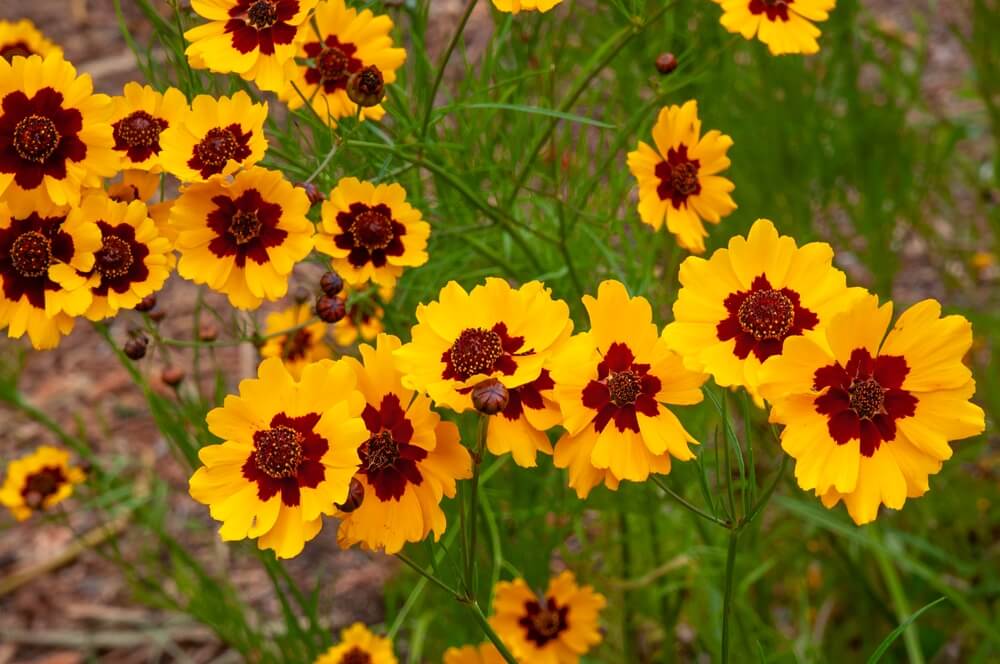
Also known as plains coreopsis, this wildflower produces cheerful yellow blooms with dark centers that dance in the breeze. It’s incredibly easy to germinate from seed and often blooms within 60 days of sowing. Coreopsis is drought-tolerant and performs better in poor soil than in rich conditions. The flowers are long-lasting in bouquets, making them practical for homesteaders who enjoy cut flowers.
- USDA Growth Zone: 4 through 10.
- Type: Annual wildflower, self-seeds readily.
- Time Until Maturity: Blooms in 60 to 70 days from seed.
- Bloom Season: Summer through fall until first frost.
Deadheading extends the blooming period for coreopsis, although letting some flowers go to seed ensures a more robust display next year.
9. Purpletop Verbena (Verbena bonariensis)
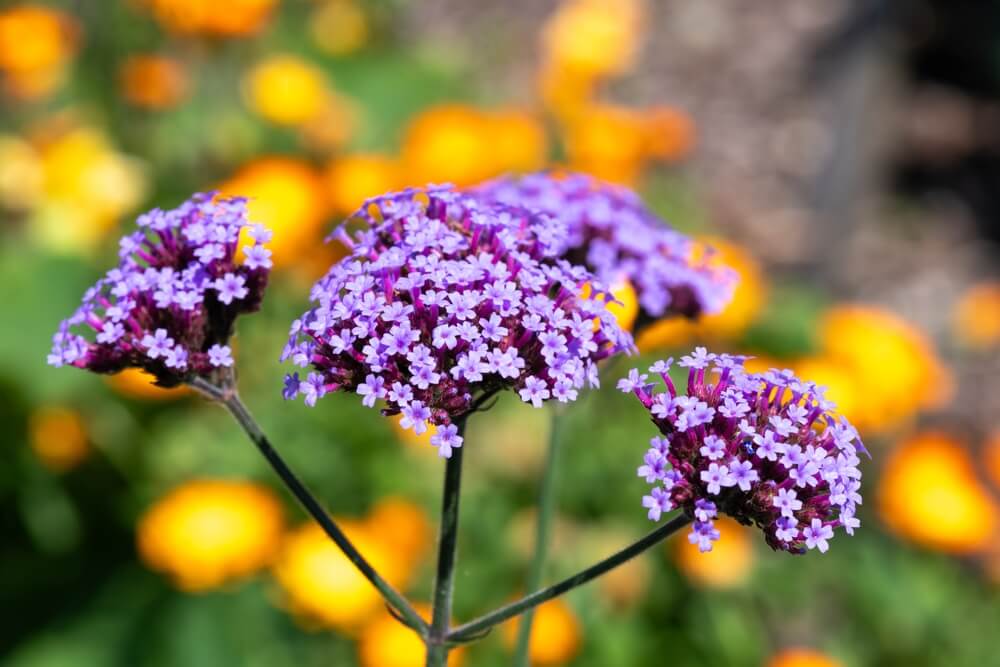
This tall, airy perennial adds instant height and movement to the garden with its clusters of tiny purple flowers, held on thin, wiry stems. It’s remarkably drought-tolerant once established and self-seeds prolifically, often appearing in unexpected (and delightful) places throughout your garden. Butterflies adore it, and it pairs beautifully with ornamental grasses.
- USDA Growth Zone: 7 through 11.
- Type: Self-seeding perennial, annual in cold zones.
- Time Until Maturity: Blooms in 90 to 120 days from seed.
- Bloom Season: Mid-summer through fall until first frost.
In colder zones, purpletop verbena may behave as an annual, but the abundant self-seeding usually ensures its return.
Read More – How To Grow Yummy Organic Lettuce From Seed To Harvest In Your Home Garden!
10. Zinnias (Zinnia elegans)
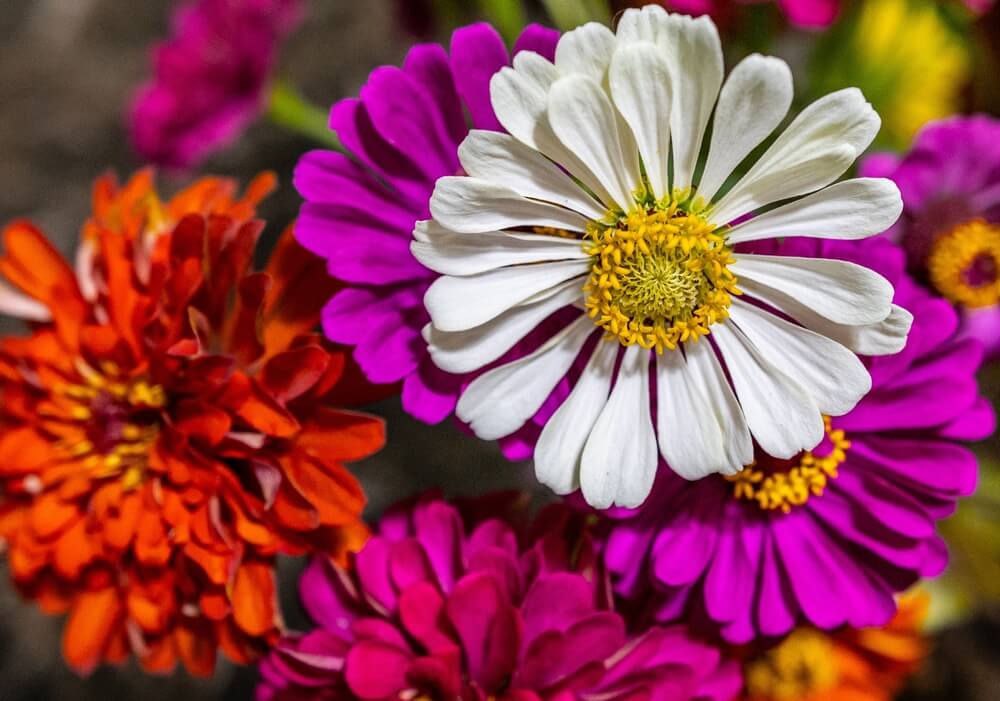
The ultimate instant-gratification flower, zinnias are nearly foolproof and bloom just 60 to 70 days from seed. They come in every color except blue and range from thumb-sized to dinner-plate proportions. What makes them perfect for homesteaders is their cut-and-come-again nature – the more you harvest, the more they produce.
- USDA Growth Zone: 2 through 11.
- Type: Heat-loving annual, dies at first frost.
- Time Until Maturity: Blooms in 60 to 70 days from seed.
- Bloom Season: Summer through fall until first frost.
Zinnias are heat and humidity-tolerant, but they can struggle with powdery mildew in humid conditions with poor air circulation.
11. Angelonia (Angelonia angustifolia)

These heat-loving plants are like snapdragons that enjoy summer’s fury. They produce spikes of small, orchid-like flowers in purple, pink, white, or blue and bloom continuously without deadheading. Angelonia is perfect for containers or front borders where you need reliable, low-maintenance color all season long.
- USDA Growth Zone: 9 through 11.
- Type: Perennial in tropical zones, annual elsewhere.
- Time Until Maturity: Blooms in 75 to 90 days from seed.
- Bloom Season: Late spring through fall until first frost.
The main limitation with angelonia is their cold sensitivity – these flowers are truly tropical plants that won’t tolerate even light frost.
12. Sunflowers (Helianthus annuus)
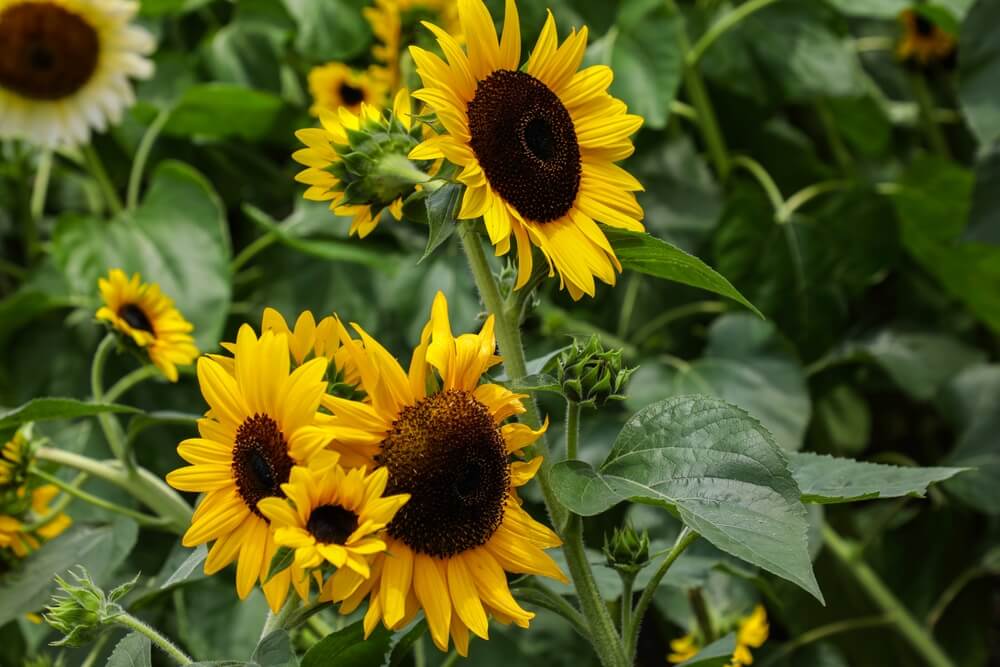
Nothing says “instant impact” like a field of sunflowers. These giants can grow several inches per day under ideal conditions, reaching full size in just 70 to 100 days. They’re incredibly easy to grow from seed and provide food for both humans and wildlife. For homesteaders, they offer edible seeds, stunning cut flowers, and even biomass for composting.
- USDA Growth Zone: 2 through 11.
- Type: Annual, adaptable to most climates.
- Time Until Maturity: Blooms in 70 to 100 days from seed.
- Bloom Season: Mid-summer through fall until first frost.
Make sure to stake your sunflowers! One of the worst garden feelings is watching an otherwise healthy sunflower snap in half or fall over due to a surprise wind gust.
Read More – The Ultimate Buff Orpington Chicken Guide. England’s Golden Gift To Backyard Chicken Keepers!
13. Marigolds (Tagetes spp.)

French and African marigolds are the reliable workhorses that many gardeners cut their teeth on. They germinate quickly, grow rapidly, and bloom continuously until the first frost. Beyond their cheerful appearance, they’re valued by organic gardeners for their pest-deterrent properties and ability to suppress nematodes in soil.
- USDA Growth Zone: 2 through 11.
- Type: Annual, dies at first frost.
- Time Until Maturity: Blooms in 45 to 60 days from seed.
- Bloom Season: Late spring through fall until first frost.
Marigolds prefer full sun with well-drained soil but are otherwise remarkably adaptable. The strong scent that deters pests can be off-putting to some people.
14. Gomphrena (Gomphrena globosa)
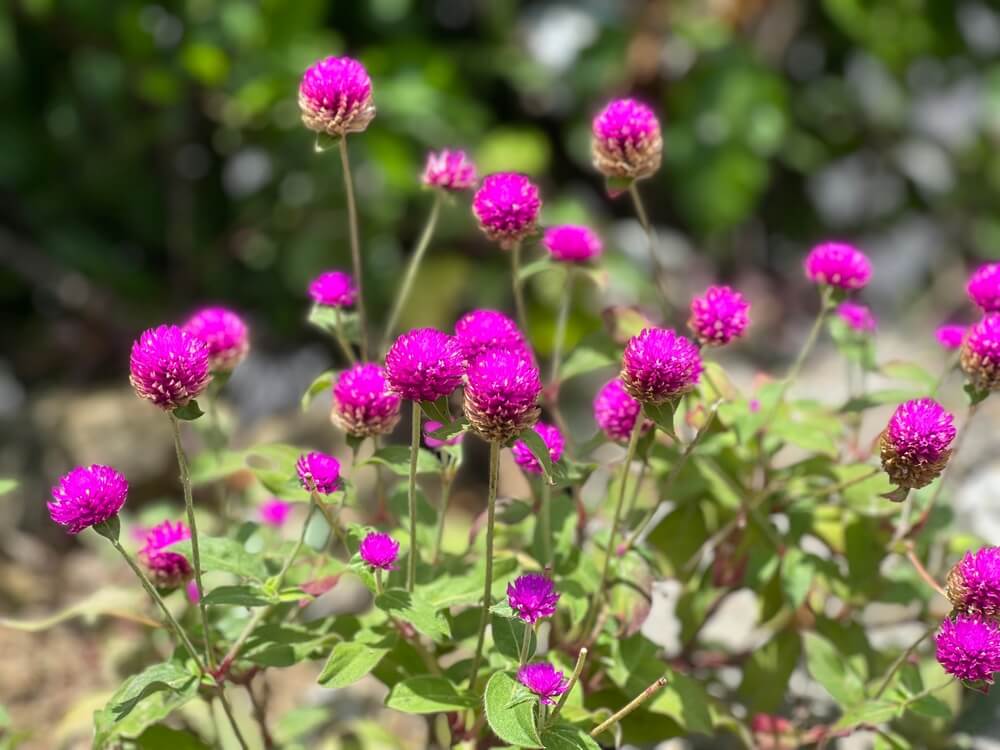
These round, clover-like flowers are drought-tolerance champions that keep blooming when other annuals are struggling. Gomphrena flowers are papery bracts that hold their color indefinitely, making them excellent for both fresh and dried arrangements. They’re heat lovers that perform better in poor soil than rich conditions.
- USDA Growth Zone: 2 through 11.
- Type: Heat-loving annual, excellent for drying.
- Time Until Maturity: Blooms in 75 to 90 days from seed.
- Bloom Season: Mid-summer through fall until first frost.
Don’t be disappointed with your gomphrena flowers if they have a slow start. While these flowers are fast-growing once established, gomphrena can be pokey as seedlings.
15. Nasturtiums (Tropaeolum majus)

These cheerful, edible flowers are the perfect choice for beginners. Nasturtiums germinate in just 7 to 10 days and start blossoming within 6 or 8 weeks, producing vibrant orange, yellow, and red trumpet-shaped flowers. What makes them special is their dual purpose – the zesty (peppery) leaves and flowers are delicious in salads, and they serve as natural pest deterrents, protecting nearby vegetables from aphids and cucumber beetles.
- USDA Growth Zone: 2 through 11.
- Type: Annual that prefers cool to moderate temperatures.
- Time Until Maturity: Blooms in 45 to 60 days from seed.
- Bloom Season: Spring through fall until first frost.
The beauty of nasturtiums is that they’re perfect for cascading from containers or scrambling through the garden as a living mulch. They can struggle in intense summer heat, though they often perk up again when temperatures cool.
Read More – The Ultimate Guide To Growing Epic Bonsai Trees In Pots – From Seed Or Nursery Stock!
16. Four O’Clocks (Mirabilis jalapa)
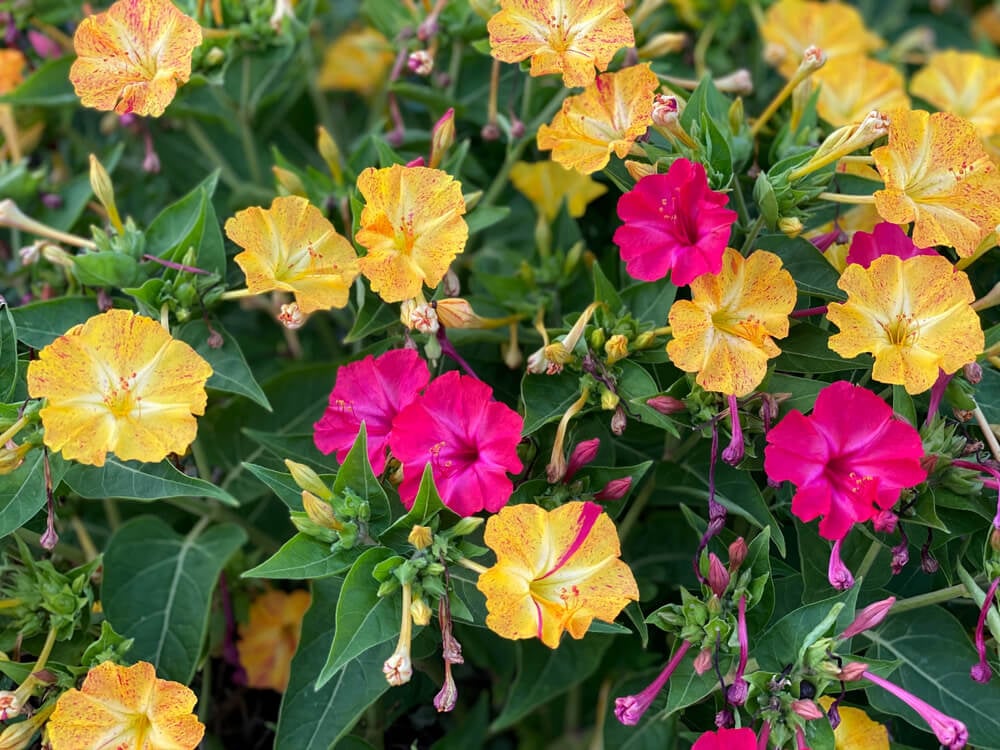
These magical evening bloomers are perfect for nighttime gardeners and anyone who wants garden drama after dinner. Four o’clocks get their name from their habit of opening their trumpet-shaped flowers in late afternoon, releasing an intoxicating fragrance that attracts evening pollinators like sphinx moths.
The flowers come in vibrant colors – pink, yellow, white, and red – often with stripes or multiple colors on the same plant. What makes them perfect for impatient gardeners is their incredible growth rate, quickly forming bushy mounds 2 or 3 feet tall and wide from seed.
- USDA Growth Zone: 6 through 11.
- Type: Perennial tuber in warm zones, annual elsewhere.
- Time Until Maturity: Blooms in 60 to 75 days from seed.
- Bloom Season: Mid-summer through fall until first frost.
Four o’clocks are nearly bulletproof once established. They thrive in poor soil and handle drought with ease. But, remember that their flowers close during the day, so they may not be ideal if you only enjoy your garden during daylight hours.
17. Canna Lilies (Canna × generalis)
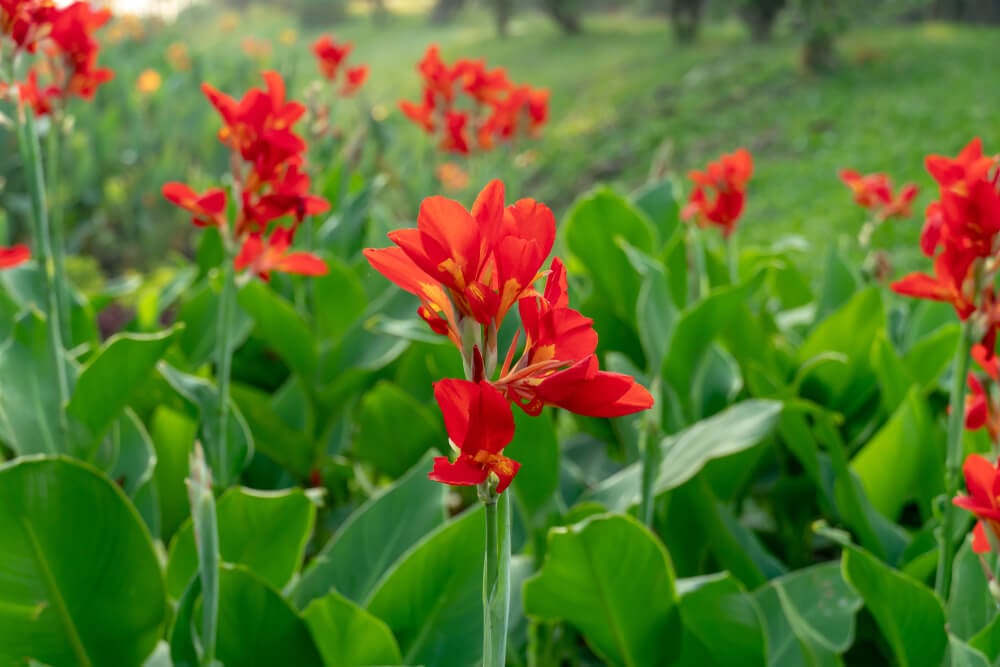
These tropical beauties offer the best of both worlds. Bold foliage and spectacular flowers. Cannas can reach heights of 4 to 8 feet during a single growing season, with some varieties featuring stunning burgundy or striped leaves. The flowers come in hot colors that attract hummingbirds.
- USDA Growth Zone: 7 through 11.
- Type: Perennial rhizome, needs winter protection in zone 7.
- Time Until Maturity: Blooms in 90 to 120 days from planting.
- Bloom Season: Mid-summer through fall until first frost.
Canna lilies need winter protection in cold zones, but many gardeners find the dramatic summer display worth the extra effort. Canna lilies prefer consistent moisture and rich, well-draining soil for optimal performance.
18. Castor Oil Bean (Ricinus communis)
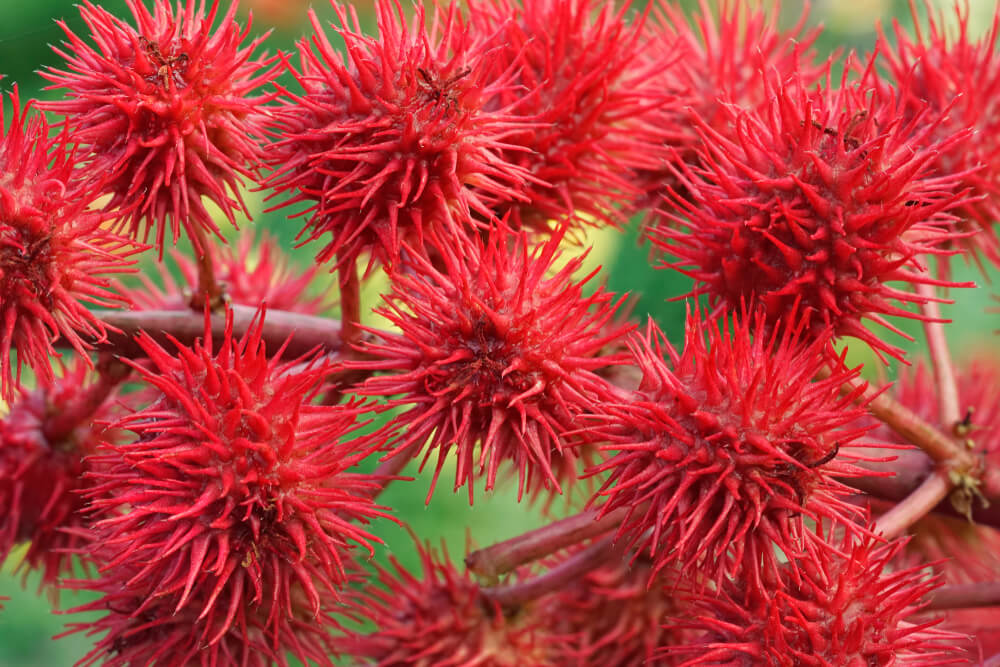
Castor oil bean is the speed demon of the foliage world! It’s capable of reaching 6 to 10 feet in a single season with enormous, palmate leaves that create instant tropical intrigue. The burgundy and green varieties are particularly striking.
- USDA Growth Zone: 9 through 11.
- Type: Annual in most zones, toxic to humans and pets.
- Time Until Maturity: Full foliage development in 60 to 90 days.
- Bloom Season: Grown primarily for foliage; flowers are inconspicuous.
Castor oil bean comes with serious safety considerations. All parts are highly toxic if ingested! Therefore, these plants are entirely unsuitable for gardens where children, dogs, or other pets may be present. Castor oil bean is also considered invasive in some warm climates.
Read More – Our 14 Favorite Fruit Trees For Growing In Pots And Containers – Even On A Balcony Or Porch!
19. Daisies (Various species)
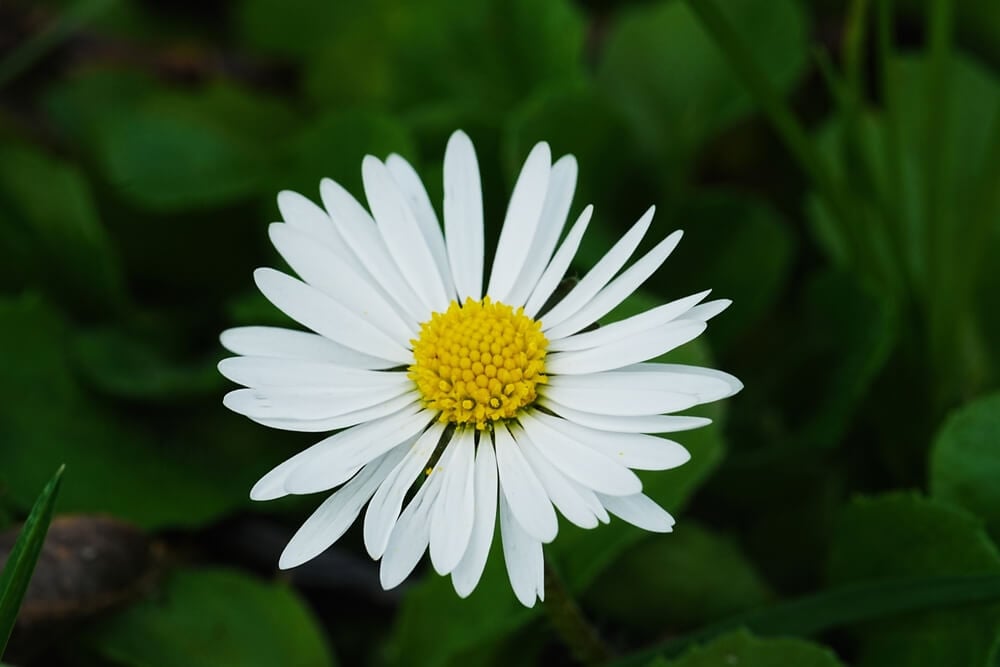
The classic daisy charm never goes out of style, and many varieties establish and spread quickly to fill in bare spots. Shasta daisies, in particular, form substantial clumps in their first year and continue expanding annually. They’re excellent for cutting, deer-resistant, and bloom for extended periods with deadheading.
- USDA Growth Zone: 3 through 9.
- Type: Often perennial, returning year after year.
- Time Until Maturity: Blooms in 90 to 120 days from seed.
- Bloom Season: Late spring through fall with deadheading.
Most daisy flowers prefer full sun with well-drained soil, but are otherwise low-maintenance. Some daisy varieties can become aggressive spreaders, which is either a benefit or a challenge depending on your goals.
20. Rhododendrons (Rhododendron spp.)
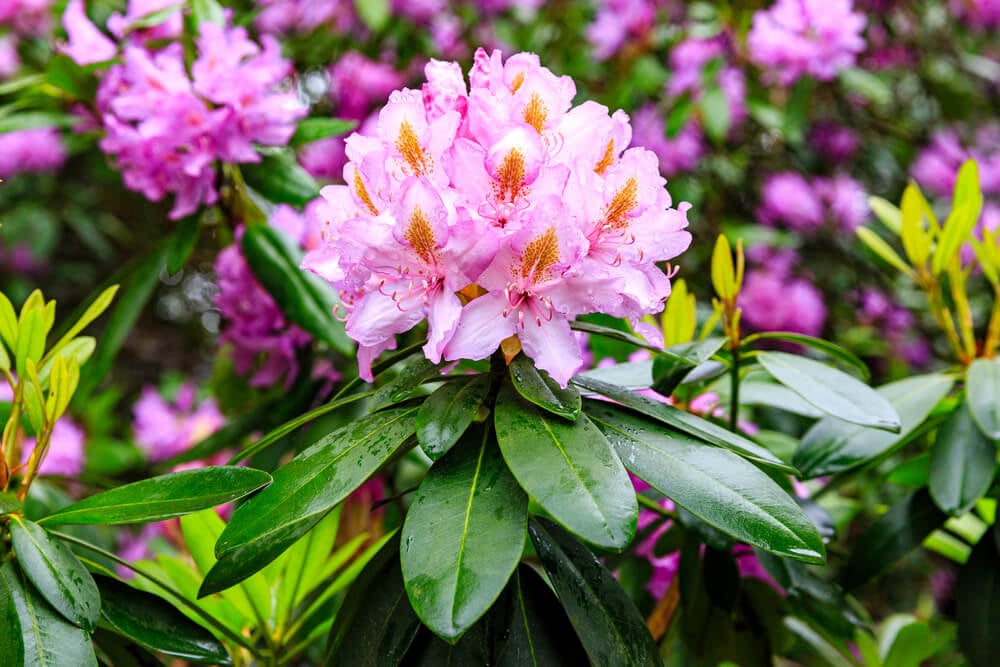
While not typically considered fast-growing, many rhododendron varieties can add 12 to 18 inches of growth per year under ideal conditions. These evergreen shrubs provide year-round structure and spectacular spring blooms, filling empty spaces with permanent beauty.
- USDA Growth Zone: 4 through 9.
- Type: Evergreen shrub, needs acidic soil.
- Time Until Maturity: Blooms in 2 to 3 years from planting.
- Bloom Season: Spring, with some varieties offering blooms in summer or fall.
Rhododendrons also have specific soil requirements – these shrubs struggle in alkaline conditions and need consistent moisture without being waterlogged.
21. Million Bells (Calibrachoa × hybrida)
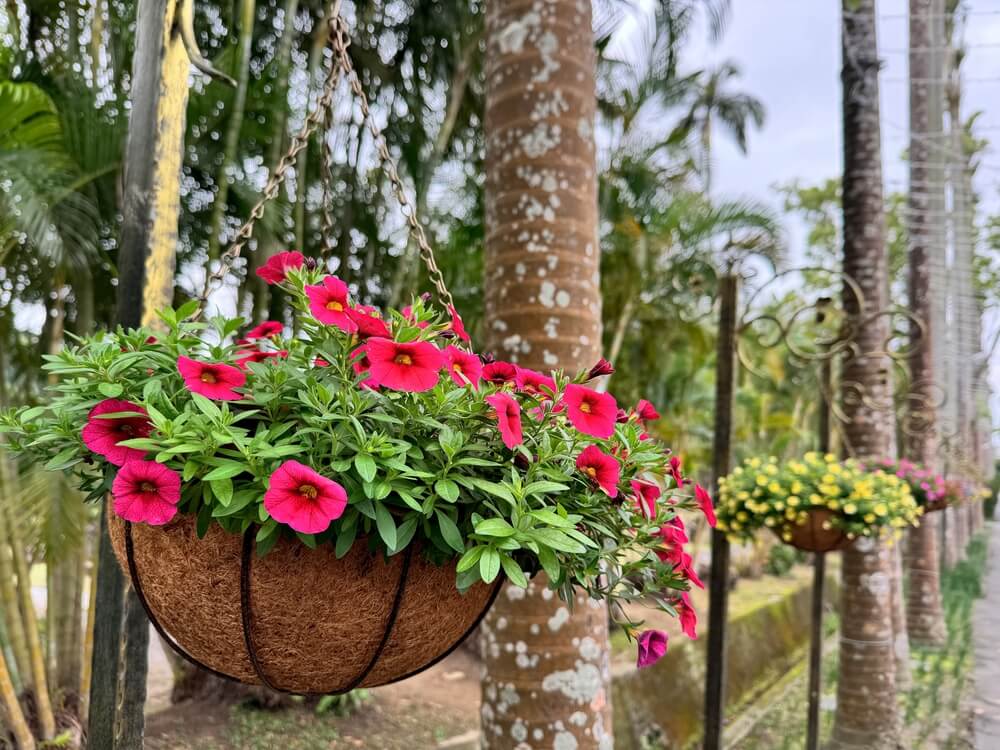
These petite petunia relatives are container superstars that bloom prolifically from planting until frost, without any need for deadheading. They cascade beautifully from hanging baskets and fill in quickly around other plants in mixed containers. Million bells are heat and humidity-tolerant, drought-resistant once established, and available in nearly every color imaginable.
- USDA Growth Zone: 9 through 11.
- Type: Perennial in warm zones, annual elsewhere.
- Time Until Maturity: Blooms in 60 to 75 days from seed.
- Bloom Season: Late spring through fall until first frost.
Million bells are fast and glorious flowers. But be careful of their tender nature. These plants are truly annuals in most climates and need consistent water when first planted to establish correctly.
Read More – What To Do On The Homestead Each Month – Our Homestead Calendar And Year-Round Guide!
Conclusion
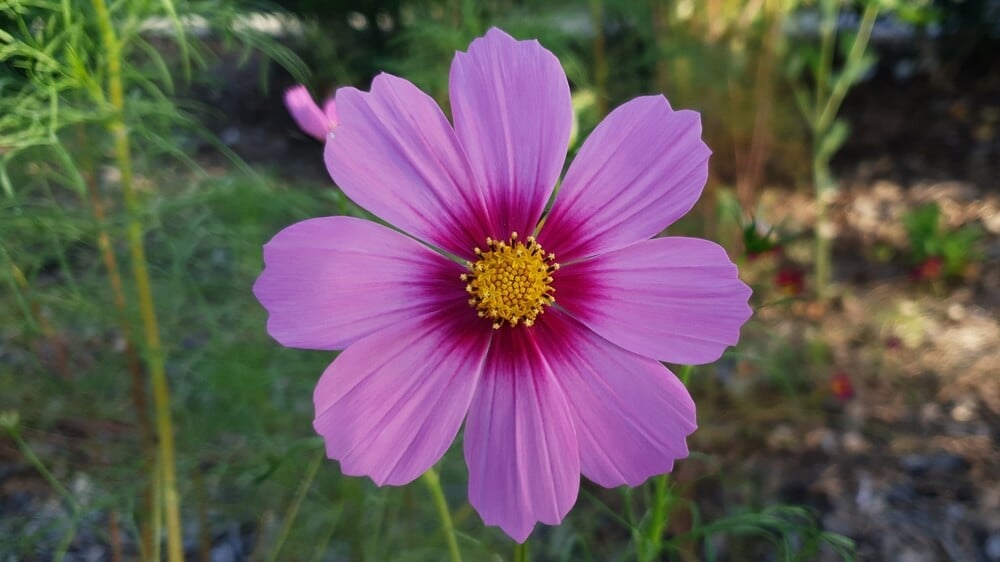
With these 21 fast-growing flowers in your gardening arsenal, you’ll never have to stare at boring, empty spaces again. You also have tons to choose from, including cottage garden classics like zinnias and marigolds to exotic showstoppers like million bells. So grab your seeds, roll up your sleeves, and get ready to watch your garden explode with color faster than you ever thought possible!
What about you?
- Are you going to plan an epic flower garden soon?
- Will you plant any of these fast-growing flowers?
- Do you know of any other flowers or plants that grow surprisingly fast?
Thanks for reading.
Have a great day!

